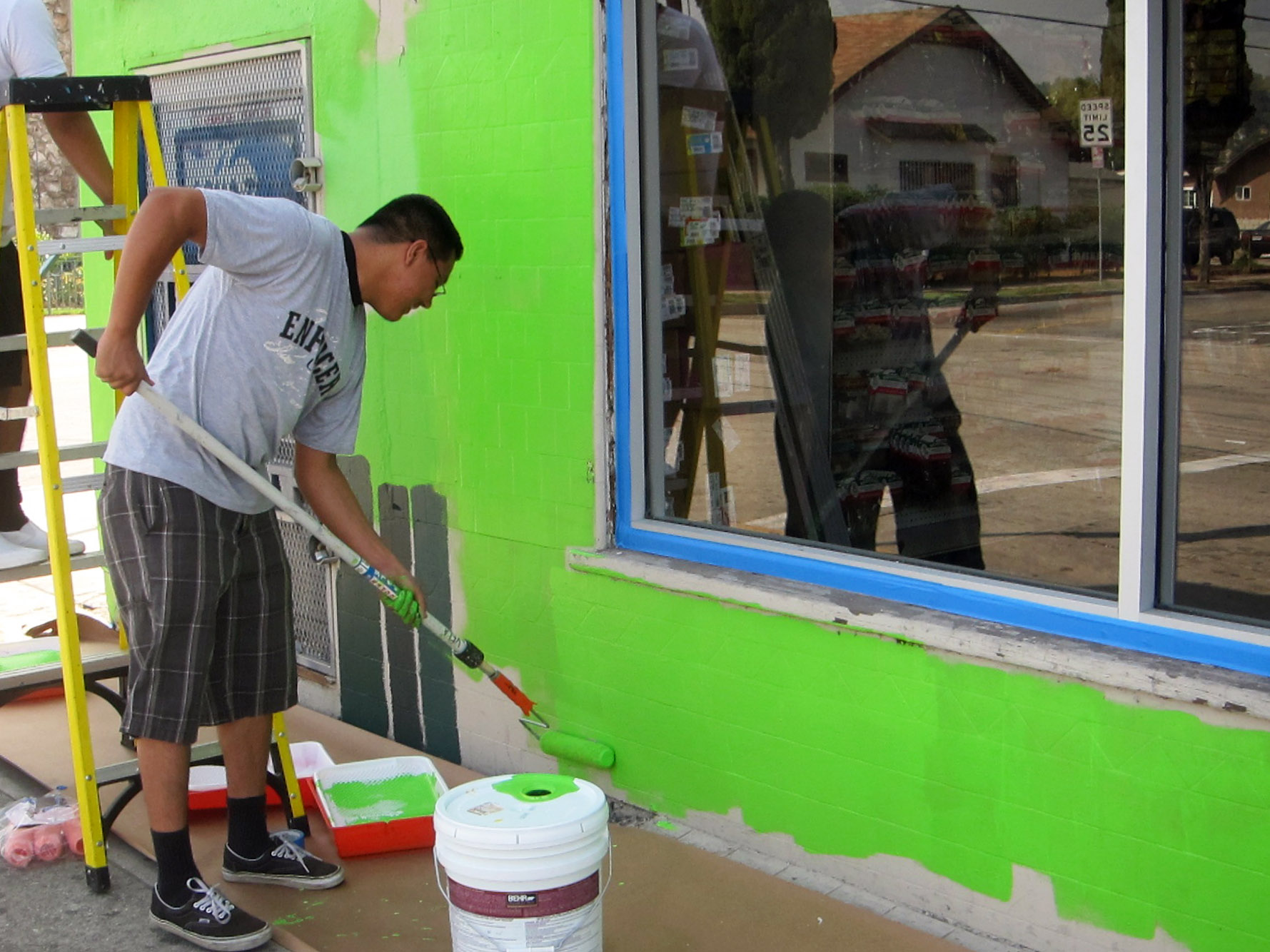UCLA and East Los Angeles locals work to improve “˜food desert’ community with fresh produce

The exterior of the YASH La Casa Market in East L.A. before its renovation, which is part of a project to bring fresh produce to the area.
By Ani Torossian
Nov. 7, 2011 2:21 a.m.
A garden of fruits and vegetables liven up the backyard of the YASH La Casa Market, while tomatoes and avocados replace chips and soda as the center of attention inside the store.
The store has not always looked this way. The East Los Angeles area where the market is located is often dubbed a “food desert” by those in the local community. The term refers to a region where fresh produce is uncommon, but cheaper processed foods are widely available.
To bring in healthier food options, the market is one of four corner stores undergoing remodeling by the UCLA–USC Center for Population Health and Health Disparities project, which updates convenience stores by reshuffling their interiors and stock rooms to provide healthier food options.
Kulwant Songu, a co-owner of the YASH La Casa Market, reports an increase in business and returning customers.
The project is part of a greater effort begun by Mike Prelip, a UCLA adjunct associate professor of community health sciences, to reduce the risk of cardiovascular disease in the East Los Angeles community.
A $2 million grant from the National Institutes of Health in 2009 allowed public health researchers at UCLA to initiate the corner store conversions. The grant also allows researchers to explore their effectiveness and to assess the sustainability of the project, Prelip said.
A number of criteria were taken into consideration when selecting candidates for conversion, which include location and the owners’ receptiveness to the project, according to Deborah Glik, professor of community health sciences and a co-author of the grant.
Prelip also added that it was important that the renovations translate into financial success for the store owners,
“One of the things public health has not done nationally is to engage the small business community,” Prelip said.
Prelip and his colleagues also worked to engage local high schools in the project. They recruited students in the area to participate for community service.
The students painted YASH La Casa Market lime green and helped redesign the store by placing junk food at the back and healthier foods in the front. They also staged weekly performances about diabetes and healthy eating habits in the East Los Angeles Civic Center.
Two of the students, Shirley Ramirez and Andy Alvarez ““ both students at Esteban E. Torres High School’s East Los Angeles Renaissance Academy “”mdash; live in the area. They went to the store regularly before it was renovated.
Ramirez said she became involved with the project because her family has a history of diabetes. The predominance of unhealthy, cheap processed foods in the area is a large factor in the high rate of diabetes and cardiovascular diseases in the community, which is over 96 percent Latino, according to the UCLA–USC Center for Population Health and Health Disparities.
Of the 10 centers associated with health disparities throughout the U.S., only the UCLA–USC center focuses primarily on a Latino population demographic, Prelip said.
“If we look at cardiovascular risk from a weight status and from a diabetes status, (it is) natural to focus on the Latino population,” Prelip said.
Ramirez and Alvarez said they were unaware that East Los Angeles was known as a “food desert.” Until they explored other parts of Los Angeles, they had not realized their neighborhood lacked fresh fruits and vegetables.
“(Many students in East Los Angeles) are not used to the idea of having a corner store that has fruits and vegetables,” Ramirez said. “They are used to going to a corner store and buying chips.”
She added that knowing that her work could help shape the eating habits of her siblings has driven her involvement.
High school students are not the only volunteers involved. The project also trains graduate and undergraduate students interested in health disparities research. Three doctoral students and several undergraduates from UCLA are currently researching health disparities through their involvement in the project, according to Prelip.
UCLA researchers have worked with the Latino community in the area in the past and have developed a friendly relationship, he added.
Through several other grants, Prelip and his colleagues aim to continue training UCLA students in health disparities research, such as the corner store conversion project. The researchers plan to assess the effectiveness of the project with patron and community surveys.
“There are hundreds of corner stores in the community,” Prelip said. “We hope that (this corner store conversion) will have a spillover effect onto other stores.”

